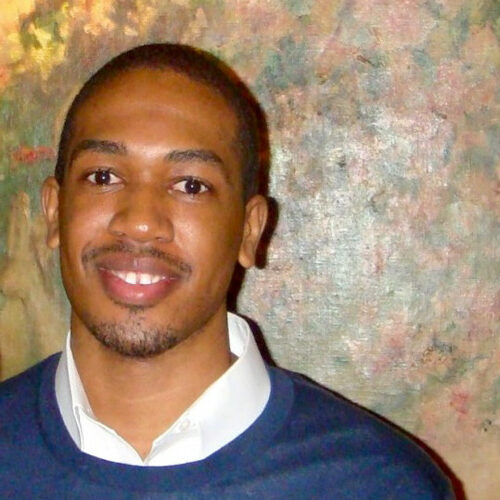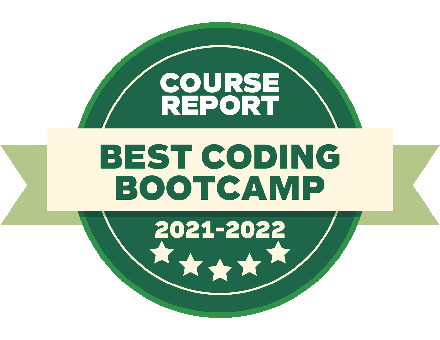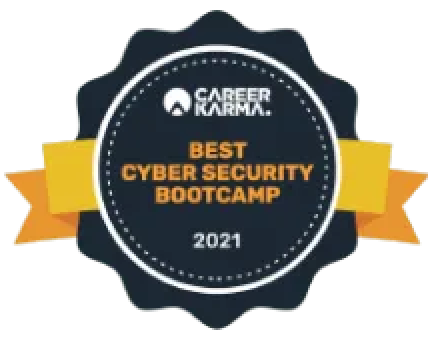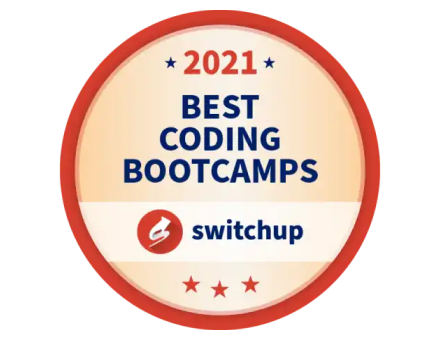

Save up to $7,000 on bootcamps*
To celebrate our ongoing partnership with GitHub, we’re reducing the cost of our part-time and full-time bootcamps to just $9,500 for a limited time, starting with our March 3, 2025 cohorts.
Apply by February 24th, 2025 to be eligible for the March 3rd, 2025 cohort.
Prepare yourself to work for some of the most influential companies in the world.

Proven, industry-aligned curriculum
If accountability, a set schedule, and dedicated classmates match your learning style, we suggest learning full-time. But if you have a packed schedule and flexibility is what matters most to you, we recommend choosing our part-time program.
No matter which pace you pick, you’ll learn our tried-and-true curriculum proven to help students land jobs and start promising careers in product design, UX/UI, or web design.
UX Process
Learn the essential components of the User Experience Design process, including standard tools, best practices, deliverables, and conducting and interpreting research.
After this phase, you’ll be able to:
- Use appropriate tools and processes to produce standard UX deliverables
- Demonstrate professional conduct, including the ability to manage conflict, incorporate diverse viewpoints, and communicate with peers
- Use standard industry methods to conduct exploratory, market, and evaluative research
- Use multiple methods to propose solutions to a problem prompt.
- Use standard interaction patterns to create new designs and prototypes.
- Iterate on design deliverables by synthesizing and implementing feedback
- Present design recommendations based on user research synthesis and credible insights
- Analyze the competitive landscape to identify opportunities and prioritize goals
UI Process
Learn the fundamentals of interface design, like design principles, typography, and design patterns, to create functional mockups.
After this phase, you’ll be able to:
- Use appropriate tools and processes to produce standard UI deliverables
- Use standard interface patterns to create new designs and prototypes
- Create a cohesive series of mockups that align with an existing design pattern library
- Curate an icon library in support of a design project
- Use typographic principles to create a hierarchy within text content
- Create designs that conform to device and OS-specific guidelines
- Employ grid systems to organize content into a structured layout
Studio 1
Begin with a project brief and deliver research-informed solutions using the product design process, then learn how to talk about your design choices and communicate users’ needs to other stakeholders.
After this phase, you’ll be able to:
- You’ll be able to follow the product design process to produce a complete set of UX/UI deliverables and explain how they support the process
- Propose a research plan based on project needs
- Conduct research that leads to credible insights
- Assess the ethical implications of design decisions
- Annotate and organize deliverables to collaborate with a multidisciplinary team
- Create mockups and a design pattern library from a set of UX deliverables
- Use a product design framework to achieve team and product goals
- Analyze how to translate UX deliverables into UI deliverable
Studio 2
Direct a project from start to finish while exploring skills like presentation strategies, effective communication, and product design ethics. This phase challenges you to meet the complex needs of real-world problems.
After this phase, you’ll be able to:
- Choose appropriate tools and processes to produce high-quality, industry-standard UX/UI work that meets users’ and other stakeholders’ requirements
- Prioritize features based on user input and stakeholder needs
- Suggest and execute a research strategy, and defend design decisions based on findings
- Demonstrate mastery of basic 2D skills and principles by producing high-quality deliverables
- Strategize and implement effective communication, planning, and facilitation with all project stakeholders
- Demonstrate practical knowledge of industry-standard tools for producing high-quality deliverables
- Identify strengths and opportunities for improvement within the product design process
Portfolio
Author a case study that explains the insights and decisions you made during the product design process. You’ll be challenged to talk about your work and to communicate your strengths in UX and UI as you prepare to enter the job market.
After this phase, you’ll be able to:
- Demonstrate job readiness by showcasing your work and communicating your thought processes.
- Assemble an online portfolio with three projects from your best product design work
- Create a minimum of 1 case study that highlights your thought process, project outcomes, and design deliverables
- Demonstrate job readiness by completing design challenges and interview prep
- Assess potential job fit based on your preferences, skills, and experience

An Exceptional Learning Experience
Flatiron School remains committed to helping our students succeed, land incredible jobs, and make the biggest impact possible. We’re also proud and honored to be recognized with several industry awards.
One UX/UI design course, multiple ways to learn
What learning pace works best for you: full-time or at your own pace? We all have different learning styles and schedules — our structured full-time pace is the learning fast-track while our part-time program is designed for students planning to learn at a more flexible pace.
Full-Time
You’ll learn product design skills on a fixed full-time schedule: roughly 8 hours a day, Monday through Friday, for 15 weeks. You will interact with students and instructors, learning both collaboratively and solo.
- 15 weeks long.
- Daily touchpoints with your cohort, group work with instructor help, paired with programming sessions, lab time with instructional staff, and community support.
- Best for students who want to learn in live lectures, keep a structured schedule, or who enjoy learning in a community with other students.
- Available in-person and online.
- Also known as our Live program.
Part-Time
You’ll learn product design skills on your own schedule over 40 weeks. You will have access to study groups and one-on-one instructor sessions.
- 40 weeks long. Set your own hours.
- Mostly recorded lectures, with optional live weekly lectures and office hours, weekly check-ins with instructors, chat with classmates and instructors via Slack.
- Best for working professionals that need to fit classes into their already-busy schedule.
- Available online only.
- Also known as our Flex program.
Pick a start date that fits your schedule

Meet our alumni who’ve changed their careers with Flatiron School
From TSA Security to Professional Software Engineer
Meet Flatiron School alum and Popmenu engineer, Deka Ambia.

How One Student’s Focus on the Goal Helped Him Find Community
Meet Flatiron School alum and FanConnect engineer, Anthony H.

Join the 5000+ grads who have landed jobs in tech
As the job market changes, we’ve continued to provide students with career coaching support relevant for today’s job search challenges.
Individual career coaching
During your job search, you’ll meet weekly with your dedicated Career Coach. Coaches help with everything from résumé review to interview prep, and help you tell your story to land your first job.
Vast employer network
We’ve built relationships with hiring managers at top companies across the world, creating a robust employer pipeline for Flatiron School grads. Our Employer Partnerships team is constantly advocating for our grads and helping you get in the door.
Proven job-search framework
Through 1-on-1 guidance from our Career Coaching team and our tried-and-true job-search framework, you’ll gain the skills and support you need to launch your career.

Meet your new community
Effective learning comes from connecting with people who are learning and teaching it. Since 2012, we’ve brought together passionate, experienced instructors and driven students to achieve incredible outcomes and careers.

What the application process looks like
Our application process is five steps from when you apply to when you begin preparing for class. After you apply, a member of our Admissions team will reach out to chat about your goals, and then you’ll be given some questions to assess how you approach problems and solutions. After that, you’ll receive your admissions decision.
How to Apply
Step 1: Apply
Submit your application. Tell us about yourself and why you’re interested in this career.
Step 2: Interview
Speak with an admissions representative. This is a non-technical interview, and is an opportunity to learn more about our program. Here’s what you can expect in the admissions interview.
Step 3: Admissions Assessment
Complete a 15-minute critical thinking and problem-solving assessment. Find out how to pass the assessment.
Step 4: Admissions Decision
Typically within 4 business days, you will hear from our team if you’ve been accepted.
Step 5: Prework
If accepted, you will begin “pre-work” that may need to be completed before the first day of class. Pre-work consists of approximately 40 hours of lessons and labs to prepare you for the course.

Find the right tuition plan for you
We have 3 easy ways you can pay for tuition.
- Pay upfront
- Pay with a loan
- NEW! Pay in installments – Pay in 12 monthly installments, with no interest

Frequently asked questions about product design
On-campus programs are held full-time and you are expected to be on campus for each day of class. The online program uses the same curriculum, but gives you the added flexibility of studying from home.
No matter which program you sign up for, you can still visit campus to connect with fellow students and alumni, find quiet places to study and work, and attend networking and workshop events.
Product and UX/UI design involve creativity and analytics, and product designers usually specialize in experience design, information architecture, UX design, UI design, and much more. Their skills revolve around user empathy, interaction design, information architecture, coding, visual design, product visions, research, and data analysis.
At its core, product design and UX/UI use design, research, and data to solve problems for a user’s experience — to help users reach their goals more easily, naturally, and efficiently. In many ways, a product designer is a customer experience designer — and many of them go by that title.
While they vary with each course and each school, product design and UX/UI design courses are short-term and often rigorous training programs to help students learn the design, information architecture, user empathy, interaction design, and research skills they need to become a great product designer.
Yes, as mentioned above, product design is a well-paying job that is relatively future-proof given how many different disciplines it covers — research, analysis, design, and experimentation.
Digging deeper, product and UX/UI design is a good career in many cities across the country. As is being a UX designer, UI designer, UX/UI designer, or full-stack designer.
According to Glassdoor, the average product designer salaries are relatively high in each of the country’s biggest job markets.
UX/UI design is a unique blend of artistic creativity, research skills, and analytical skills, meaning it’s a transferable skill across many disciplines and industries.
And the average salaries for product designers reflect their unique skills. According to Glassdoor, the average salary for a product designer is $104k nationwide.
Similarly, UX designers average $112k and UI designers average $90k.
This makes UX/UI design a great career for creatives and analytically minded people regardless of whether they’re in it for the creativity or the money. Marketers, salespeople, and analysts have all proven to have the skills to become great UX/UI designers.
UX/UI design is an ever-evolving and exciting discipline that’ll be critical for companies well into the future regardless of their industry.
Satisfied customers are important for any business. The happier your customers, the more customers you’ll have and the more they’ll engage with you.
Good UX/UI and product designers understand what customers want and communicate your company’s value to them effectively while helping them achieve their goals. Maintaining a good experience wins customer confidence and keeps them coming back to use your service.
Our Product Design course prepares students for roles like product designer, UX designer, UX researcher, interaction designer, UI designer, visual designer, and communication designer. The skills gained during this course form a partial but important foundation for additional roles like content strategist, information architect, UX writer, UI engineer, and product owner.
In terms of job types, graduates are prepared for full-time salaried and part-time jobs, internships, apprenticeships, and contract and contract-to-hire roles.
The Flatiron School Career Services team exists to help get you hired. We do this in two ways:
- Empowering stand-out job-seekers to learn to be no-brainer hires → this is what your Career Coach does!
- Building a nationwide network of hiring partners → this is what the Employer Partnerships team does!
You will have an initial meeting with your career coach during the program to get acquainted with the process. Once you’ve graduated from the program you’ll work with your Career Coach on how to maximize your opportunities and efforts for landing a job. It is important to note that, like with our course, you must come prepared and committed. Your Coaches will help you to get organized and prepare you for interviews, but it is up to you to do the heavy lifting as well.
If you would like to connect with a member of our team, please simply schedule a chat with one of our admissions representatives.






